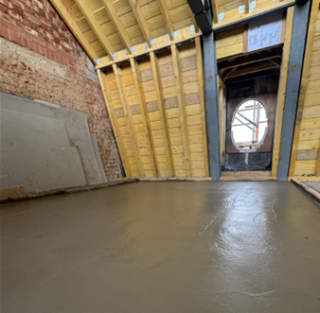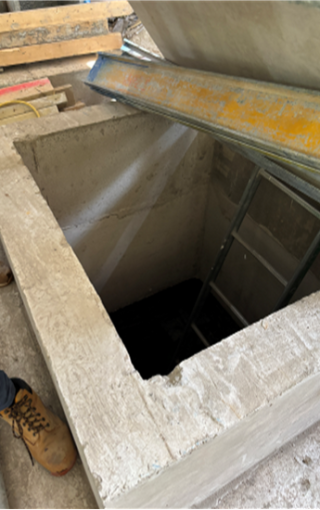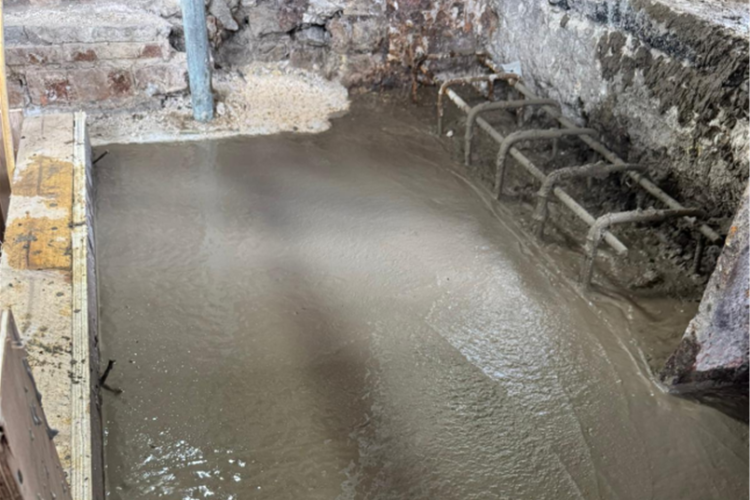This post was originally published on this site
https://www.theconstructionindex.co.uk/assets/news_articles/2025/10/1760628660_heidelberg-ciib-q-sr-3.pngSites of historical and cultural significance have the potential to spearhead sustainable change throughout the industry. Our refurbishment and fit out project at London Museum exemplifies this. Supporting both our client’s and our own sustainability ambitions, our project team have used two novel concrete mixes, a recycled concrete aggregate (RCA) mix and a combined calcined clay and RCA mix, reducing carbon, improving circularity and contributing to the wider industry’s understanding and efforts to decarbonise.
Believed to be a UK first, the use of calcined clay and RCA to form a single concrete mix is an exemplar of collaboration. We worked with Heidelberg Materials, concrete frame specialist Getjar, and structural engineer AKTII to produce a unique mix to trial on the project, which marks a significant sustainability breakthrough for the industry – combining carbon and circularity benefits and ultimately demonstrating calcined clay as a suitable supplementary cementitious material (SCM).
From inception to execution, we worked to develop, approve and pour the RCA and calcined clay mix in permanent reinforced concrete beams in just over two weeks, demonstrating the speed at which innovative and novel solutions can be deployed when everyone is in alignment.

The trial mix has seen carbon emissions reduced by approximately 17% per cubic metre and construction and demolition concrete waste used instead of virgin aggregates. The mix sees calcined clay, which is produced by heating clay to a high temperature until it becomes reactive, used to replace 30% of the Portland cement – the carbon intensive element of concrete – as an SCM. This offers an approximate carbon saving of 66.6 kgCO2e per cubic metre compared to the mix originally specified. Additionally, the slight weakness identified from adding RCA to the mix was offset by the calcined clay, with this careful calculation meaning there was no adverse impact on the quality or workability of the concrete, nor therefore on the project’s programme.
Ultimately, this can reduce our industry’s reliance on ground granulated blast furnace slag (GGBS), a material quickly becoming depleted through over-use. With current industry thinking being that we should not over specify the use of GGBS, particularly for the sole purpose of carbon reduction, London Museum presented an opportunity – a chance to propose, invest in and test out an alternative SCM that could be used across the industry in the future. Creating additional supply and demand for supplementary cementitious materials, meaning more low carbon material, more choice and more projects reducing carbon – lowering emissions globally.


Creation of our RCA trial mix involved Getjar’s use of Holcim’s EcoCycle RCA, which saw collaboration traceable back to conversations at sustainability pre-start meetings. It became clear that, to get ideas off paper and poured, collaborative research would be required to ensure mixes were appropriate and effective – which resulted in Getjar’s proposal of using Holcim’s EcoCycle RCA concrete mix. The project sustainability team and package engineer worked to push this idea through the structural engineers, fast-tracking testing to ensure the mix was poured as much as possible. This early and collaborative engagement was vital to making it happen.
The final concrete mix – used on blinding, tin deck slabs and upstands – substitutes 20% of the recycled aggregate for crushed concrete waste sourced from demolition and construction activities. Crucially, here, the concrete mix could be tested in places where it would not be visible or exposed, safeguarding the client and architect’s vision for the overall design of the build.
Given early-stage discussions and prior approvals, the mix incurred no delay to the project programme and its implementation also had no cost implications either. Combine this with operatives reporting good handling and finish when compared to standard CEMI concrete mixes, it is evident that not all trials lead to tribulations.
Ultimately, the key lesson is that it is only by collaborating all the way through from the drawing board to the finish that the construction industry will be able to exploit the benefits that innovative materials can offer.
Got a story? Email [email protected]


